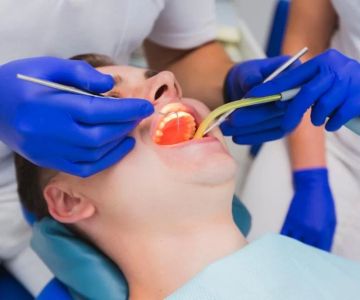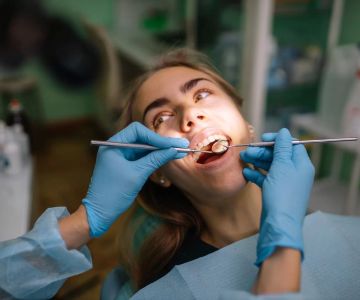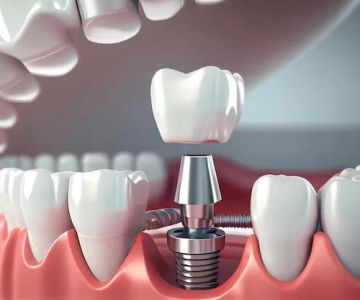How to Restore a Broken Tooth: Best Treatments and Solutions
- 1. Understanding Tooth Restoration
- 2. Causes of Broken Teeth
- 3. Treatments for Restoring a Broken Tooth
- 4. Prevention Tips for Avoiding Broken Teeth
- 5. Real-Life Experience: Restoring My Broken Tooth
- 6. Learn More About Dental Restoration with Dentistry Toothtruth
1. Understanding Tooth Restoration
Tooth restoration is the process of repairing or rebuilding a damaged or broken tooth. Whether it's a minor chip or a more severe break, restoring a tooth is essential for both functionality and aesthetics. A broken tooth can affect your ability to eat, speak, and smile confidently. Fortunately, there are several effective treatments available to restore your tooth and prevent further damage.
2. Causes of Broken Teeth
There are many reasons why a tooth may break, ranging from accidents to daily wear and tear. Some common causes of broken teeth include:
- Trauma or Injury: A blow to the face, sports injuries, or accidents can cause a tooth to break.
- Tooth Decay: Cavities can weaken the structure of a tooth, making it more susceptible to breaking.
- Chewing Hard Foods: Chewing on ice, hard candy, or other tough foods can lead to a cracked or broken tooth.
- Age and Wear: As you age, your teeth may become more brittle, increasing the likelihood of damage.
Understanding the causes of a broken tooth can help you avoid future damage and take proactive steps to care for your teeth.
3. Treatments for Restoring a Broken Tooth
There are several effective treatments available to restore a broken tooth, depending on the severity of the damage:
- Dental Fillings: For minor chips or cracks, a dental filling can restore the shape of your tooth and protect it from further damage.
- Dental Crowns: If a significant portion of the tooth is broken, a crown can cover and protect the tooth, restoring its strength and appearance.
- Dental Veneers: For aesthetic restoration, especially in the front teeth, dental veneers can be placed over the tooth to enhance its appearance and function.
- Root Canal Therapy: If the break reaches the tooth's pulp, a root canal may be needed to remove infected tissue and restore the tooth's health.
- Tooth Bonding: Tooth bonding is a quick, cost-effective solution for minor chips and cracks. It involves applying a tooth-colored resin to the affected area to restore its shape.
Depending on your specific needs, your dentist will recommend the best treatment to restore your broken tooth and ensure its longevity.
4. Prevention Tips for Avoiding Broken Teeth
Taking steps to prevent broken teeth can save you from pain and expensive dental treatments. Here are some tips to help protect your teeth:
- Wear a Mouthguard: If you're involved in contact sports or grind your teeth at night, a mouthguard can protect your teeth from injury and wear.
- Avoid Chewing Hard Objects: Refrain from chewing on ice, hard candies, or pens to reduce the risk of breaking a tooth.
- Maintain Good Oral Hygiene: Regular brushing and flossing can help prevent tooth decay, which weakens your teeth and makes them more prone to breaking.
- Visit Your Dentist Regularly: Regular dental checkups help identify potential issues early and prevent them from worsening.
By following these preventive measures, you can reduce the likelihood of damaging your teeth and maintain a healthy smile.
5. Real-Life Experience: Restoring My Broken Tooth
I experienced a broken tooth after a minor car accident, and the pain was unbearable. I was worried about the appearance of my smile as well as the functionality of my tooth. After visiting my dentist, I learned that a dental crown would be the best option for restoring my tooth. The procedure was quick and painless, and the crown looked and felt just like my natural tooth. I was relieved to restore both the appearance and function of my tooth, and the process gave me more confidence in my smile.
6. Learn More About Dental Restoration with Dentistry Toothtruth
If you’re looking for expert advice and the best products for tooth restoration, Dentistry Toothtruth offers comprehensive information and services. Their resources can help you understand your dental care options, from simple fillings to advanced restoration treatments. Visit their website today to learn more and take the next step toward restoring your smile.







 Inverness Dental Care | Dr. Payal Trivedi5.0 (252 review)
Inverness Dental Care | Dr. Payal Trivedi5.0 (252 review) Dental Depot4.0 (139 review)
Dental Depot4.0 (139 review) Dentistry for Children - Peachtree City4.0 (780 review)
Dentistry for Children - Peachtree City4.0 (780 review) OMS Nashville - Dental Implants & Oral Surgery4.0 (245 review)
OMS Nashville - Dental Implants & Oral Surgery4.0 (245 review) Northview Dental4.0 (301 review)
Northview Dental4.0 (301 review) The Better Sleep Dentists5.0 (2 review)
The Better Sleep Dentists5.0 (2 review) The Importance of Oral Health Education During Pregnancy for a Healthy Pregnancy
The Importance of Oral Health Education During Pregnancy for a Healthy Pregnancy Best Tips for Brushing Your Teeth Properly for Healthy Gums: Essential Techniques for Oral Health
Best Tips for Brushing Your Teeth Properly for Healthy Gums: Essential Techniques for Oral Health Why Skipping Dental Checkups Can Lead to Bigger Oral Health Problems
Why Skipping Dental Checkups Can Lead to Bigger Oral Health Problems Advantages of Porcelain Dental Restorations
Advantages of Porcelain Dental Restorations How Can Diabetes Cause Tooth and Gum Problems? Preventing and Managing Oral Health Issues
How Can Diabetes Cause Tooth and Gum Problems? Preventing and Managing Oral Health Issues Healthy Habits for Promoting Good Oral Health and Hygiene: Tips for a Healthy Smile
Healthy Habits for Promoting Good Oral Health and Hygiene: Tips for a Healthy Smile